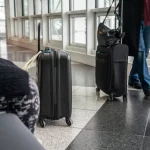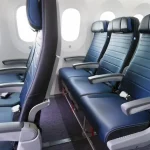Key Takeaways
- Overnight departures deliver: SFO-NRT 11:40 PM and SFO-ICN midnight flights align with natural sleep patterns, unlike afternoon Europe departures.
- Aircraft hierarchy for rest: 787-9 Dreamliner’s cabin pressure and humidity systems measurably improve sleep quality over older configurations.
- Route length determines value: 10+ hour flights justify Polaris sleep investment; shorter Europe routes offer limited rest windows after meal service.
- Individual results vary dramatically: Even experienced travelers report completely different sleep success on identical routes and aircraft
Why Most Polaris Sleep Experiences Fail (And How to Choose Routes That Work)
“Do you think Polaris is worth it if you can’t sleep on planes?” This question generates hundreds of responses across travel communities, revealing a fascinating pattern: travelers who claim they “never sleep on planes” frequently get 6-8 hours of quality rest on properly timed Polaris flights, while others spend thousands on poorly scheduled routes and arrive exhausted.
The determining factors aren’t individual sleep ability – they’re route timing, aircraft environmental systems, and service coordination that either support natural sleep patterns or fight against them.
The breakthrough insight: Passengers consistently report first successful airplane sleep experiences correlating with specific routes and departure times rather than personal sleep capabilities. One traveler in our forum noted: “I never slept on a plane in my life until I flew Polaris” while another confirmed “I can literally only sleep when I’m in a Polaris seat.”
Understanding which SFO departures optimize for rest versus which prioritize operational convenience prevents expensive premium disappointments and delivers the sleep Polaris promises.
Our United Polaris SFO community provides insider information on which flights actually deliver sleep versus which ones leave you exhausted despite the premium price. Get access to live flight tracking, sleep optimization guides, and member-only discussions that help you choose routes where Polaris actually works for rest.
Routes That Actually Deliver Sleep Success
SFO-NRT: The Overnight Champion That Works
Why this route consistently succeeds: 11:40 PM departure puts passengers to bed when bodies naturally want sleep. Landing in morning Tokyo time creates perfect circadian rhythm alignment.
Experienced travelers consistently cite this route as enabling their first successful plane sleep experiences. The departure timing advantage proves more important than seat configuration – passengers report “sleeping 8 hours straight” and “waking up feeling human” regularly on this route.
Strategic meal approach: Eat substantially in the Polaris Lounge 2-3 hours before departure, decline dinner service completely, sleep immediately after takeoff. Wake naturally for breakfast service 1-2 hours before arrival, creating 7-9 hours of uninterrupted rest.
Aircraft consideration: Usually operates 777-300ER with 60 Polaris seats. While not as environmentally advanced as 787-9, the timing advantage overwhelms aircraft differences for sleep success.
SFO-ICN: The 787-9 Sleep Advantage
Midnight departure timing: 12:30 AM departure on select rotations provides natural sleep schedule alignment Aircraft environmental benefits: 787-9 Dreamliner’s lower cabin altitude (6,000 feet vs 8,000 feet) and higher humidity (20% vs 4%) create measurably better sleep conditions Sleep duration: 6-8 hours of quality rest opportunity with proper service coordination.
The 787-9 difference proves significant for sleep-sensitive passengers. As one traveler described: “Never slept on planes until 787-9 SFO-SIN. The cabin feels different – less dry, quieter, easier to breathe.”
SFO-SIN: Maximum Sleep Value Investment
Flight duration advantage: 15+ hours provides extensive premium sleep opportunity Red-eye alignment: Late departure matches natural sleep timing
Value calculation: Extended flight time justifies Polaris pricing through prolonged premium rest experience
Ultra-long routes like Singapore maximize the sleep value proposition by providing hotel-night-equivalent rest time plus transportation.
Routes That Disappoint Sleep-Focused Travelers
SFO-LHR: The Afternoon Sleep Conflict
The fundamental problem: 1:15 PM departure fights natural wake hours and circadian rhythm patterns.
Sleep reality: 2-4 hours maximum rest due to meal service timing and body clock resistance.
Better applications: Entertainment, dining, and comfort rather than sleep optimization
Travelers consistently report: “Paid for Polaris SFO-LHR thinking I’d sleep. Watched movies instead because afternoon departure made sleep impossible.”
Evening Europe Departures: Poor Timing Strategy
SFO-LHR 7:05 PM departure: Departs during natural dinner time, lands when body clock registers 1:30 AM. Service conflict: Full dinner service when passengers should be preparing for slee.p Passenger segment: Designed for corporate travelers needing full work days before departure, not sleep-focused travelers
Aircraft Sleep Environment Analysis
Boeing 787-9 Dreamliner: Superior Sleep Conditions
Multiple passengers confirm measurable 787-9 sleep advantages beyond seat configuration:
Environmental improvements:
- Lower cabin altitude reduces physiological fatigue
- Higher humidity prevents dehydration-related sleep disruption
- Quieter engines minimize noise disturbance
- 28 Polaris seats create less cabin activity than higher-capacity aircraft
Sleep position flexibility: Passengers report successful side sleeping, stomach sleeping, and back sleeping depending on individual preferences and body dimensions.
Boeing 777-300ER: Adequate But Compromised
Sleep considerations:
- 60 Polaris seats generate more passenger traffic than 787-9’s 28 seats
- Window passengers must navigate over center passengers for lavatory access
- Standard cabin environmental systems without 787-9 enhancements
- Higher ambient noise affects sleep quality for sensitive passengers
Seat selection strategy: Odd-numbered window seats (1A, 3A, 5A) provide maximum privacy and minimize aisle disruption. Even-numbered seats angle toward high-traffic areas with reduced sleep privacy.
Individual Sleep Variation Reality
Success stories from confirmed “non-sleepers”:
- “I’ve NEVER slept on a plane. It’s been 100% worth it to me every time”
- “I can’t sleep on planes either and pass out with a flat bed”
- “I never could sleep on a plane until I had my first lay flat seat”
Realistic sleep challenges: Some passengers report continued difficulty even in Polaris due to individual requirements. One detailed review noted: “You can only sleep in the pod if you are a back sleeper. I can’t sleep on my back… Trying to turn on my side means that my arm is squashed on the wall of the pod.”
CPAP compatibility: Multiple travelers discuss sleep apnea equipment integration with mixed results depending on individual setup requirements.
Meal Service Coordination for Maximum Sleep
Red-Eye Flight Sleep Optimization
Proven strategy from successful sleepers:
- Substantial Polaris Lounge dining 2-3 hours before departure
- Decline dinner service completely – sleep immediately after takeoff
- Natural breakfast wake-up 1-2 hours before arrival
- Result: 7-9 hours of uninterrupted sleep
This approach eliminates the primary sleep disruptor on overnight flights. Passengers implementing this strategy report their most successful airplane sleep experiences.
Service Timing Impact on Available Sleep
Meal service duration analysis:
- Dinner service: 1.5-2.5 hours from takeoff depending on cabin capacity
- Breakfast service: 1-2 hours before arrival across all routes
- Net sleep disruption: 3-4 hours of potential rest time affected by service
Sleep window calculations by flight length:
- 10-hour flight: 6-7 hours available sleep after service coordination
- 12-hour flight: 8-9 hours potential sleep with proper timing
- 8-hour flight: 4-5 hours maximum sleep opportunity
Route Selection for Sleep Priority
Optimal Sleep Routes from SFO
Consistently recommended by experienced travelers:
- SFO-NRT red-eye: Natural timing, adequate aircraft, regular success reports
- SFO-ICN overnight: 787-9 when available, superior cabin environment
- SFO-SIN red-eye: Maximum flight duration justifies premium sleep investment
Moderate sleep potential:
- SFO-FRA afternoon: 747-8 capacity advantage but limited sleep window
- SFO-LHR midday: Better than evening departures, still compromised by timing
Routes to Avoid for Sleep-Focused Travel
Consistent disappointments:
- Any evening Europe departure: Misaligned with natural sleep patterns
- Routes under 8 hours: Insufficient sleep window after meal service completion
- Monday morning arrivals: Weekend departure scheduling disrupts sleep preparation
Sleep Success Factors Beyond Route Selection
What Actually Enables Airplane Sleep
Timing alignment: Departure during natural sleep hours proves more important than premium seat features during wake hours Aircraft environmental systems: 787-9 provides measurably better conditions for sleep-sensitive passengers Service coordination: Strategic meal timing adds 2-3 hours to available sleep window Individual preparation: Sleep aids, familiar accessories, proper lounge timing support success
Setting Realistic Sleep Expectations
Polaris sleep isn’t hotel bed quality, but provides dramatic improvement over economy alternatives for most travelers. As one passenger noted: “I’d rather be awake in Polaris than awake in economy.”
The honest assessment: Polaris enables sleep for many previously unsuccessful plane sleepers, but individual variation remains significant. Route and aircraft selection matter more than perfect sleep preparation for overall success probability.
Most practical reality: Choose red-eye routes on appropriate aircraft rather than expecting sleep miracles on poorly timed flights. Understanding which SFO departures actually align with sleep success prevents expensive premium travel mistakes.
Strategic Flight Selection Intelligence
Aircraft Assignment Monitoring
Equipment change impacts: United occasionally substitutes aircraft types, dramatically affecting sleep environment quality. Monitor aircraft assignments leading up to departure for potential changes.
Seasonal deployment patterns: Summer European routes sometimes feature 787-9 while winter schedules revert to older aircraft, affecting sleep optimization based on travel timing.
Sleep Value Calculation Framework
Cost per sleep hour analysis: Compare total Polaris premium against expected quality sleep hours for route-specific value assessment Alternative strategy consideration: Premium Plus on shorter routes may provide better value than Polaris with limited sleep potential
Looking to maximize your chances of actually sleeping on your next SFO international flight? Join our community of experienced travelers who share real-time aircraft assignments, route-specific sleep success rates.
FAQ: SFO Polaris Sleep Optimization
Which SFO route provides the best sleep opportunity?
SFO-NRT red-eye departure consistently delivers 7-9 hours of sleep-aligned timing with natural circadian rhythms. Multiple travelers cite this as their first successful plane sleep experience.
Does aircraft type significantly affect sleep quality?
Yes, Boeing 787-9 Dreamliner’s lower cabin altitude and higher humidity measurably improve sleep comfort compared to older aircraft configurations for passengers sensitive to environmental factors.
Should I skip meal service to maximize sleep time?
On red-eye flights, eating substantially in Polaris Lounge beforehand and declining dinner service provides 2-3 additional hours of uninterrupted sleep opportunity.
Which departure times should I avoid for sleep-focused travel?
Afternoon and evening departures (1-9 PM) to Europe fight natural sleep patterns and provide limited rest windows after meal service completion.
Will I definitely sleep better in Polaris if I can’t sleep on planes?
Most travelers report dramatic sleep improvement, but individual variation exists. Route timing and aircraft environmental systems matter more than seat features alone for sleep success probability.
Related guides on United Polaris:





